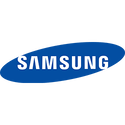Shipments of Notebooks in 2022 Expected to Reach 238 Million Units, Says TrendForce
Due to the pandemic, laptops shipments reached a record high of 240 million units in 2021, according to TrendForce's investigations. However, the market has been abuzz recently and, as the global population of the fully vaccinated has exceeded 50%, relevant demand driven by the pandemic is expected to gradually weaken. Shipment volume will decrease by 3.3% year-on-year, revised down slightly to 238 million units. Chromebooks will account for approximately 12.3% of shipment volume, though it accounted for approximately 15.2% in 2021. The momentum of shipments has slowed down significantly which indicates that demand derived from the economic effect of remote working and teaching has subsided.












































